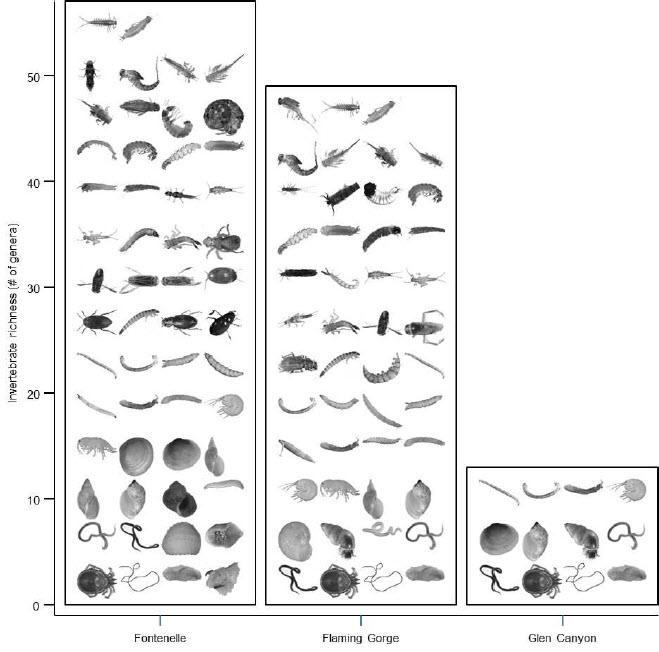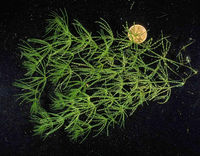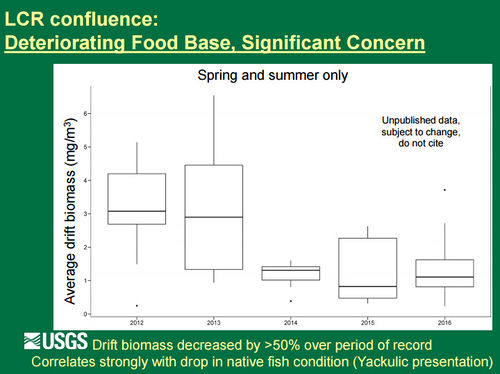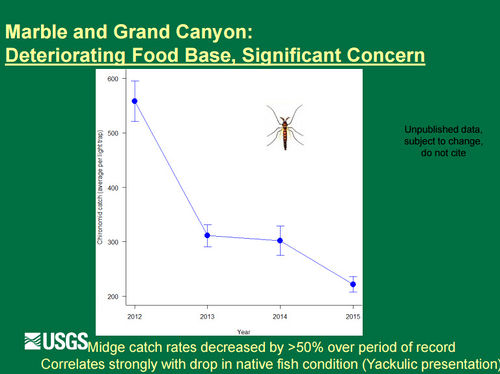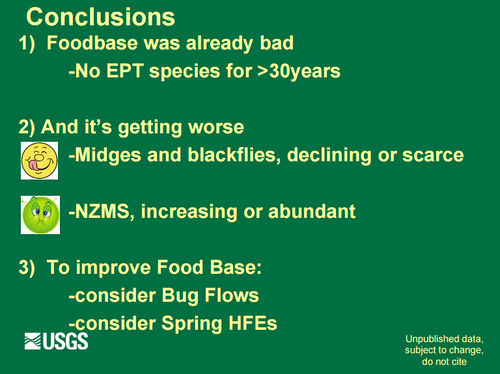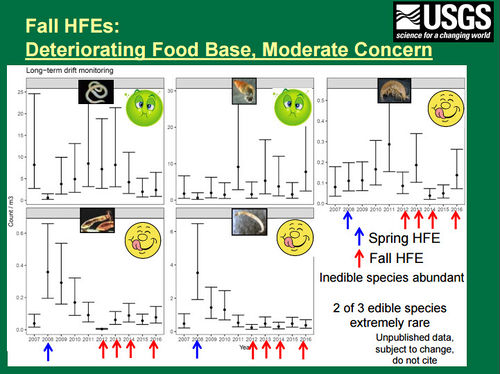Difference between revisions of "FOOD BASE"
Cellsworth (Talk | contribs) |
Cellsworth (Talk | contribs) |
||
| Line 71: | Line 71: | ||
*[http://gcdamp.com/index.php?title=Humpback_Chub_Page Humpback Chub Page] | *[http://gcdamp.com/index.php?title=Humpback_Chub_Page Humpback Chub Page] | ||
*[http://gcdamp.com/index.php?title=FISHERY Lees Ferry Rainbow Trout Fishery Page] | *[http://gcdamp.com/index.php?title=FISHERY Lees Ferry Rainbow Trout Fishery Page] | ||
| + | |||
| + | |- | ||
| + | ! <h2 style="margin:0; background:#cedff2; font-size:120%; font-weight:bold; border:1px solid #a3b0bf; text-align:left; color:#000; padding:0.2em 0.4em;"> LTEMP Experimental Action: Aquatic Resource-Related Experimental Treatments (BA, pages 30-41) [https://www.fws.gov/southwest/es/arizona/Documents/Biol_Opin/120059_LTEMP%20BiOp_11-25-16.pdf] | ||
| + | </h2> | ||
| + | |- | ||
| + | |style="color:#000;"| | ||
| + | |||
| + | [http://gcdamp.com/index.php?title=The_Bugflow_Experiment '''Low steady weekend flows (“bug flows”)'''] would be conducted to test whether the | ||
| + | flows would increase insect abundance. On an experimental basis, for example, | ||
| + | flows would be held low and steady for two days per week (weekends) from May | ||
| + | through August to attempt to improve the productivity of the aquatic food base, | ||
| + | and increase the diversity and abundance of mayflies (Ephemeroptera), stoneflies | ||
| + | (Plecoptera), and caddisflies (Trichoptera), which are collectively referred to as | ||
| + | EPT. | ||
|- | |- | ||
| Line 84: | Line 98: | ||
[https://www.gcmrc.gov/research_areas/food_base/primary_production.aspx Measuring Primary Production in the Lees Ferry Reach] | [https://www.gcmrc.gov/research_areas/food_base/primary_production.aspx Measuring Primary Production in the Lees Ferry Reach] | ||
| − | Effects of BugFlows and HFEs on the Aquatic Foodbase | + | Effects of [http://gcdamp.com/index.php?title=The_Bugflow_Experiment BugFlows] and [http://gcdamp.com/index.php?title=The_HFE_Page HFEs] on the Aquatic Foodbase |
*[https://www.gcmrc.gov/research_areas/food_base/citizen_science_monitoring.aspx Citizen Science Insect Monitoring] | *[https://www.gcmrc.gov/research_areas/food_base/citizen_science_monitoring.aspx Citizen Science Insect Monitoring] | ||
| − | |||
| − | |||
Hyporheic Anoxia in the Lees Ferry Reach | Hyporheic Anoxia in the Lees Ferry Reach | ||
Revision as of 17:35, 3 May 2017
|
|
The Aquatic Food Base below Glen Canyon DamThe Colorado River below Glen Canyon Dam has been altered by dam-induced modifications to the river’s flow, temperature, and sediment supply. Nonnative species have also changed the natural system. Nonnative fish are thought to prey on and compete with native fish, including the endangered humpback chub (Gila cypha). These impacts have likely changed both the amount and sources of energy that fuel the aquatic food web and the flows of energy within the food web. Installation of the dam created a relatively clear, cool aquatic environment below the dam that now allows aquatic plants to capture the sun’s energy, and they in turn are now consumed by a few species, including scuds (Gammarus lacustris), midges (Family: Chironomidae), blackflies (Simulium arcticum), and New Zealand mudsnails (Potamopyrgus antipodarum). The first three species can provide food for both native and nonnative fishes, but fish cannot digest the New Zealand mudsnail. Desired Future Condition for the Aquatic Food BaseThe aquatic food base will sustainably support viable populations of desired species at all trophic levels. Assure that an adequate, diverse, productive aquatic foodbase exists for fish and other aquatic and terrestrial species that depend on those food resources. |
| EPT as Biologic Indicators of Stream Condition |
Algae and Aquatic Macrophytes |
Aquatic Macroinvertebrates |
|---|
